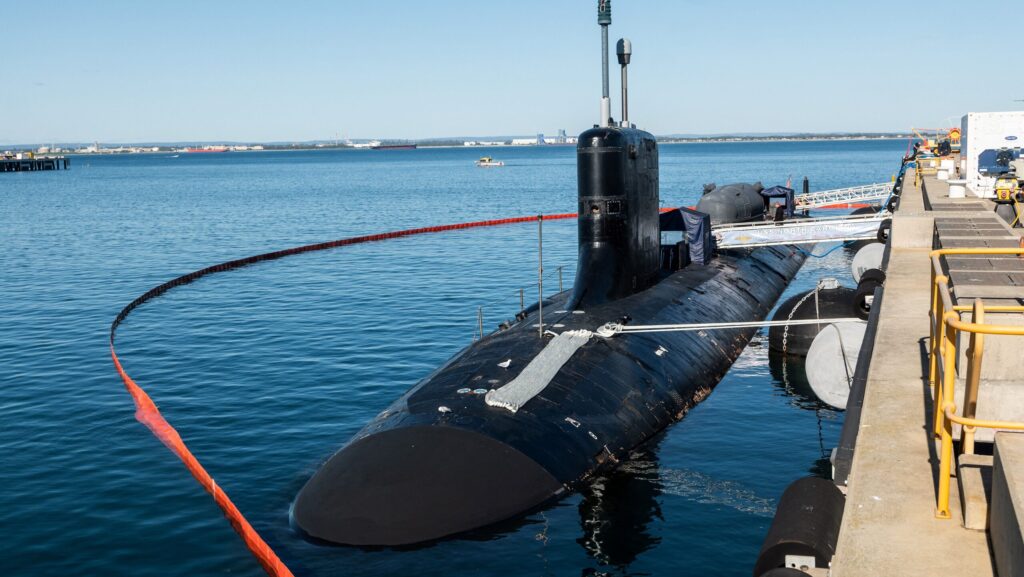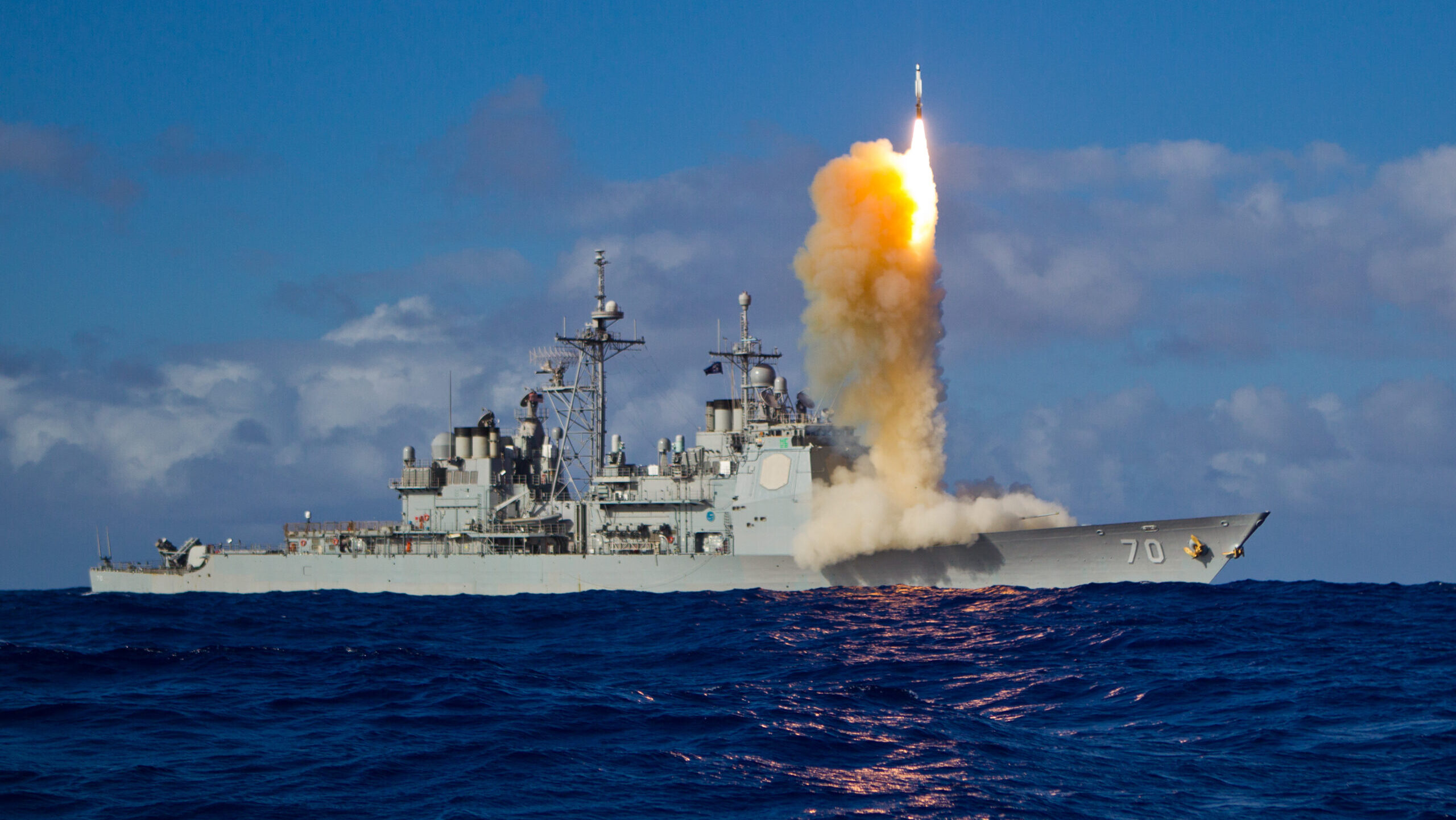Australian thinktank warns of ‘less reliable’ America, high pricetag for AUKUS sub program
“The spend, still seven years or so from the first Australian-flagged nuclear submarine, already has the submarine arm of the ADF on its way to becoming a fourth service: this newcomer is outpacing the Army, Air Force and surface Navy in its spending, complexity and risk,” the report’s summary notes.


US Navy Virginia-class submarine, USS North Carolina, docks at the HMAS Stirling port in Rockingham on the outskirts of Perth in August 2023. (Photo by Tony McDonough / AFP)
SYDNEY — With the emergence of “a less reliable and more demanding” partner in the US, it’s time for Australia to look inward for its own defense needs and to reach out to “non-US” allies in the region, according to a new report from an Australian thinktank.
“American policy appears to be much more likely to be one of much narrower calculations of immediate self-interest in specific situations, instead of enduring decades-long partnerships and alliance actions that are predictable and reliable as the basis for others’ defence decisions and actions,” says the report [PDF] from Strategic Analysis Australia published Thursday.
Though US officials have maintained they’re committed to a “free and open Indo-Pacific” — as recently voiced by Secretary of Defense Pete Hegseth in a visit to Japan last month — the report claims Washington has shown “little interest in helping its allies and partners” in that goal. It also warns of Washington’s unpredictability, citing America’s pausing of intelligence sharing and weapons support with Ukraine.
“That requires Australia to be able to do more to meet our own defence needs, and to work more closely with key non-US partners such as Japan, South Korea and India,” the report says.
One program expected to tie Australia to the US closely for the forseeable future — and to the tune of billions of dollars — is the AUKUS nuclear-powered submarine initiative in which Canberra is expected to buy at least three American-made Virginia-class submarines before building its own SSN AUKUS boats. The new report warns that when it comes to that program, the planned spending is on pace to be enough to represent essentially a fourth military branch — using money that might be better spent elsewhere.
“The spend, still seven years or so from the first Australian-flagged nuclear submarine, already has the submarine arm of the ADF [Australian Defence Forces] on its way to becoming a fourth service: this newcomer is outpacing the Army, Air Force and surface Navy in its spending, complexity and risk,” the report’s summary notes.
One of the report’s authors, Marcus Hellyer, points to the fact that “the Air Force’s investment budget is crashing, from $4.1 billion in 2024–25 to less than $2.5 billion in 2024–25 and 2025–26. One might argue that the Air Force has had its turn, with new capabilities like the F-35A fleet now delivered, so now it’s the Navy’s turn.”
He says the Air Force is arguably the most powerful service in the Australian Defense Force and “has successfully rebuilt itself into a fifth-generation force, while the Navy has struggled with failed shipbuilding projects. Instead of backing our winners, we’ve put the Air Force into the doghouse.”
To aid non-AUKUS defense commitments, and to potentially stave off further criticism from a Trump administration focused on military spending as a percent of GDP, the report argues Australia must increase its defense funding to “at least” 3 percent of GDP in the next three years.
“Australia has no credible argument for continuing to devote such a low share of our national wealth to meeting our security needs, particularly as we now plan to not just have the conventionally equipped military that we’ve maintained for decades but now want to add enormously expensive nuclear-powered submarines into our order of battle,” Strategic Analysis Australia co-founder Michael Shoebridge argues. “Telling Washington that we intend to do that by raising our defense spending to 2.3% of GDP by 2035 will only solidify US assessments that we’re free riding on US taxpayers’ willingness to finance US military spending, and that we plan to continue to do so.”
A spokesperson for Australia’s Department of Defence did not respond to a request for comment for this report.









































































































































































